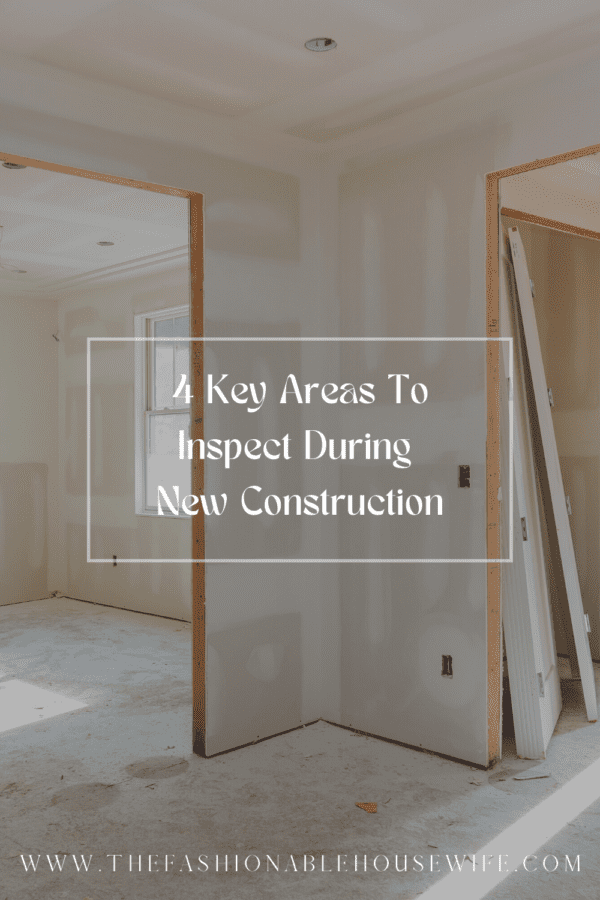
When you buy a new house, it’s likely that the home inspector will spend a lot of time looking at the foundation, plumbing, heating and cooling systems. But there are other critical aspects of the home that most people don’t think about until they have problems—and these can be just as important for you to inspect. Here are five things to look out for during new construction:
Roofs
- Check for leaks. If you see water stains on the ceiling, that’s a sign of a leaky roof. Look for wet spots in the attic and around windows as well.
- Inspect for damage to the roofing material itself, such as cracks or missing shingles. This can indicate a problem with the structure of your home, so it’s best to get this checked out by an expert right away!
- Examine wear patterns on individual shingles; if they’re all wearing evenly then it’s likely just normal wear and tear; however if there are any signs of unusual wear (such as scratches) then this could indicate damage caused by animals or storms–or even vandalism! It’s important that you keep an eye out for anything unusual so that you can take action before things get worse!
Plumbing Systems
- Check for leaks. If you’re building a new home, it’s important to make sure there are no plumbing leaks before moving in. Make sure all pipes are secure and check for any signs of water damage inside and outside of your home.
- Ensure proper drainage and water pressure throughout your house by testing each fixture individually (e.g., toilets, showers). If a fixture doesn’t drain properly or has low pressure when using it at full capacity, call in an expert who can diagnose the problem and fix it before anything gets worse than just annoying you every morning while getting ready for work!
- Make sure there’s enough water supply available by checking how many fixtures there are per bathroom versus how many faucets each one has; this ratio should generally be 1:1 but may vary depending on what kind of sink/tub combo you have installed upstairs versus downstairs–so keep track during construction so there aren’t any issues later down road when deciding where exactly where things should go within each room layout plan!
Foundation
If you’re buying a new home, it’s important to inspect the foundation as well. Foundation problems are common and can be expensive to fix, which is why you want to make sure there aren’t any issues before moving in. Foundation issues can also lead to other problems in your home such as structural damage or mold growth inside your walls. These kinds of things can be hard for homeowners (or even contractors) to spot on their own, so if there are signs that something isn’t right with your house’s foundation then it’s best not take any chances by skipping this step!
Interior Details
- Insulation: Insulation is a critical component of any building, but it’s especially important in new construction. If you don’t have enough insulation or the wrong kind of insulation, your home may not be as energy-efficient as possible.
- Ventilation: You want to make sure that there are no problems with ventilation–for example, if there are gaps in the walls or roof that allow air to leak into or out of your home. This could lead to mold growth or other moisture issues over time.
- Drainage: Drainage refers both to gutters around the house and downspouts leading away from it (if there are any). It’s also important that any gutters have proper drainage pipes connected to them so water doesn’t pool near where it could cause damage later on down the road!
A home inspector can help find problems before they become serious.
The key to a happy home is having a home inspection. A professional inspector will be able to find problems and issues that might not be apparent to untrained eyes, such as water damage or mold growth. If there are any issues found during the inspection, your inspector will offer advice on how to fix them and what you should expect from their repair.
You should also ask about warranties on new construction homes; some come with up to 10 years of coverage from defects in materials or workmanship!
If you are unhappy with your results from an inspection, don’t hesitate to contact us again so we can help resolve any problems before they become serious issues down the road.
Conclusion
We hope this article has given you some insight into the many different areas of construction that can be inspected. We know it can be overwhelming, but we also know that by educating yourself on what to look for in your new home and hiring a professional who knows what they’re doing (like us!), you’ll have peace of mind knowing that everything is done right. If you need help with a new construction inspection, reach out to us today!







